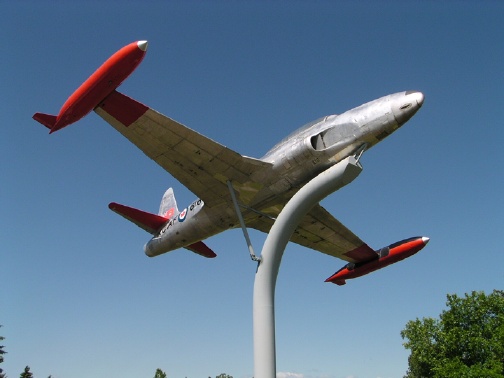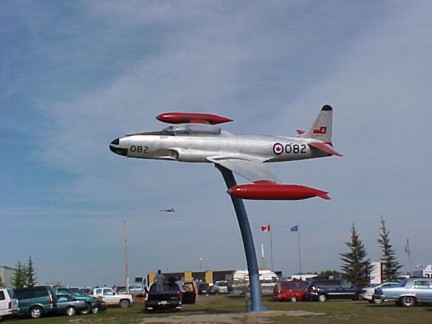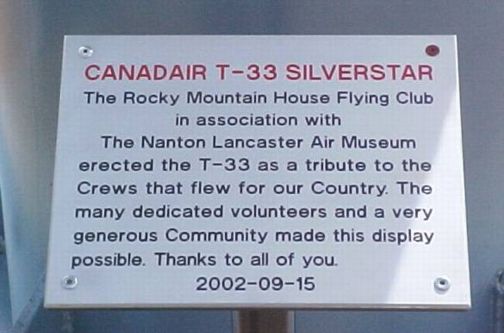 Museum
Museum  |
Bomber Command
|
Aircrew Chronicles
|
Aircrew Losses
|
Nose Art
|
BCATP
|
Lancaster
|
Media
|
Bomber Command
|
Aircrew Chronicles
|
Aircrew Losses
|
Nose Art
|
BCATP
|
Lancaster
|
Media
 Museum
Museum  |
Bomber Command
|
Aircrew Chronicles
|
Aircrew Losses
|
Nose Art
|
BCATP
|
Lancaster
|
Media
|
Bomber Command
|
Aircrew Chronicles
|
Aircrew Losses
|
Nose Art
|
BCATP
|
Lancaster
|
Media
Museum Collections
Aircraft in the Collection

|
The T-33 is an American designed plane which was developed by Lockheed. It evolved from one of the earliest jet aircraft, the single seat F-80 "Shooting Star" which first flew in January of 1944 and was the first American jet combat aircraft to see general operational use. The prototype T-33 first flew in 1948. Carrying a crew of two in tandem, it was designed to train pilots or for armament training. For armament training, the T-33 could be fitted with two .50 Browing machine guns in the nose with underwing stores including rockets or bombs. For many years the T-33 was the most widely used jet trainer in the world, having been used by twenty-five countries.
|
The Royal Canadian Air Force ordered twenty T-33's from Lockheed in 1951. Canadair then began building the aircraft and the Canadian protoype first flew in 1952. By the completion of the program in 1956, 656 aircraft had been assembled.
The Canadian built T-33's were powered by a Nene engine which allowed them to outperform the Allison powered Lockheed Aircraft.
The T-33 has served the RCAF and the Canadian Armed Forces well. After serving for many years as a primary jet trainer, its duties evolved into service as a target tug, naval gunnery target, airport radar calibarater and general utility transport. It remains in service and will probably best be remembered to the public as the aircraft flown by the RCAF's aerobatic soloist, "The Red Knight."
As part of the Mutual Aid program, Canada has given T-33's to Bolvia, Greece, Portugul, and Turkey.
The T-33 on display at the Bomber Command Museum is on long term loan by Orville Rowland of Okotoks. One of the Canadian built aircraft, it's fuselage bears serial #21272 although the tail is from another aircraft. It was taken on strength by the RCAF in 1954 and assigned to #2 Advanced Flying School at CFB Portage la Prairie, Manitoba where in remained until it was struck off strength in 1967. Mr. Rowland acquired the aircraft and placed it on display at the Okotoks Airport. It was acquired by the museum in 1998. |
 on display during the 2002 Rocky Mountain House Air Show. Note CF-18 in background. |

|
The markings are those of a T-33 flown by W/C Jack Allan. W/C Allan was born and raised in Nanton. Following wartime service in North Africa where he flew Spitfires and Hurricanes, he helped form the "Golden Hawks," the RCAF's spectacular aerobatic team which flew F-86 Sabre Jets. Two T-33's were assigned to the team, one of which carried the number 21616. As the officer commanding the team for three years, W/C Allan travelled all over North America flying this aircraft. |
Canadair T-33 (Serial #21437) was acquired by the Society in December, 2001. It is currently on long term loan to the Rocky Mountain House Flying Club on behalf of the Rocky Mountain House Airport Commission. After a great deal of effort by the club it now provides an impressive display at the entrance to the airport.